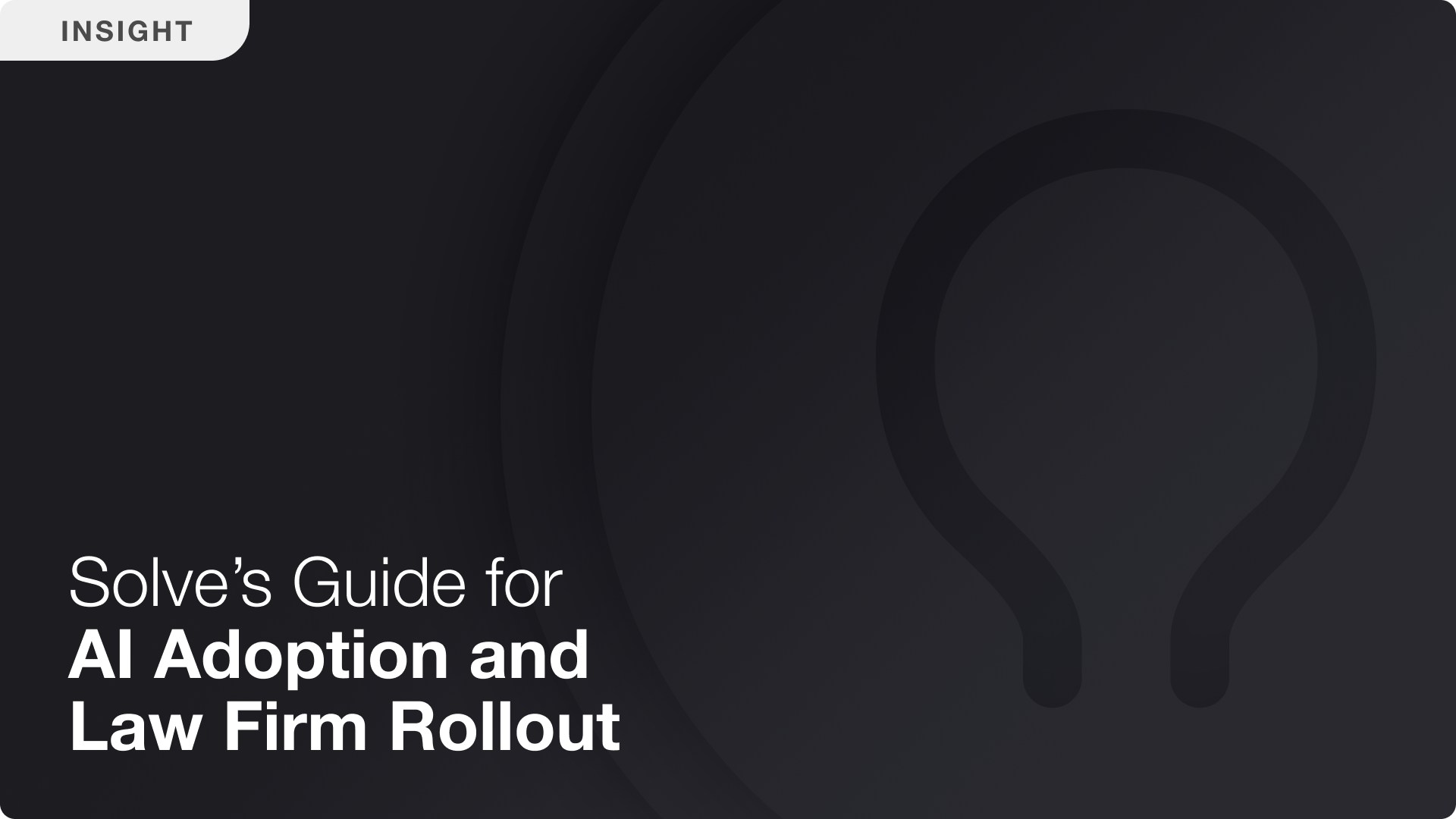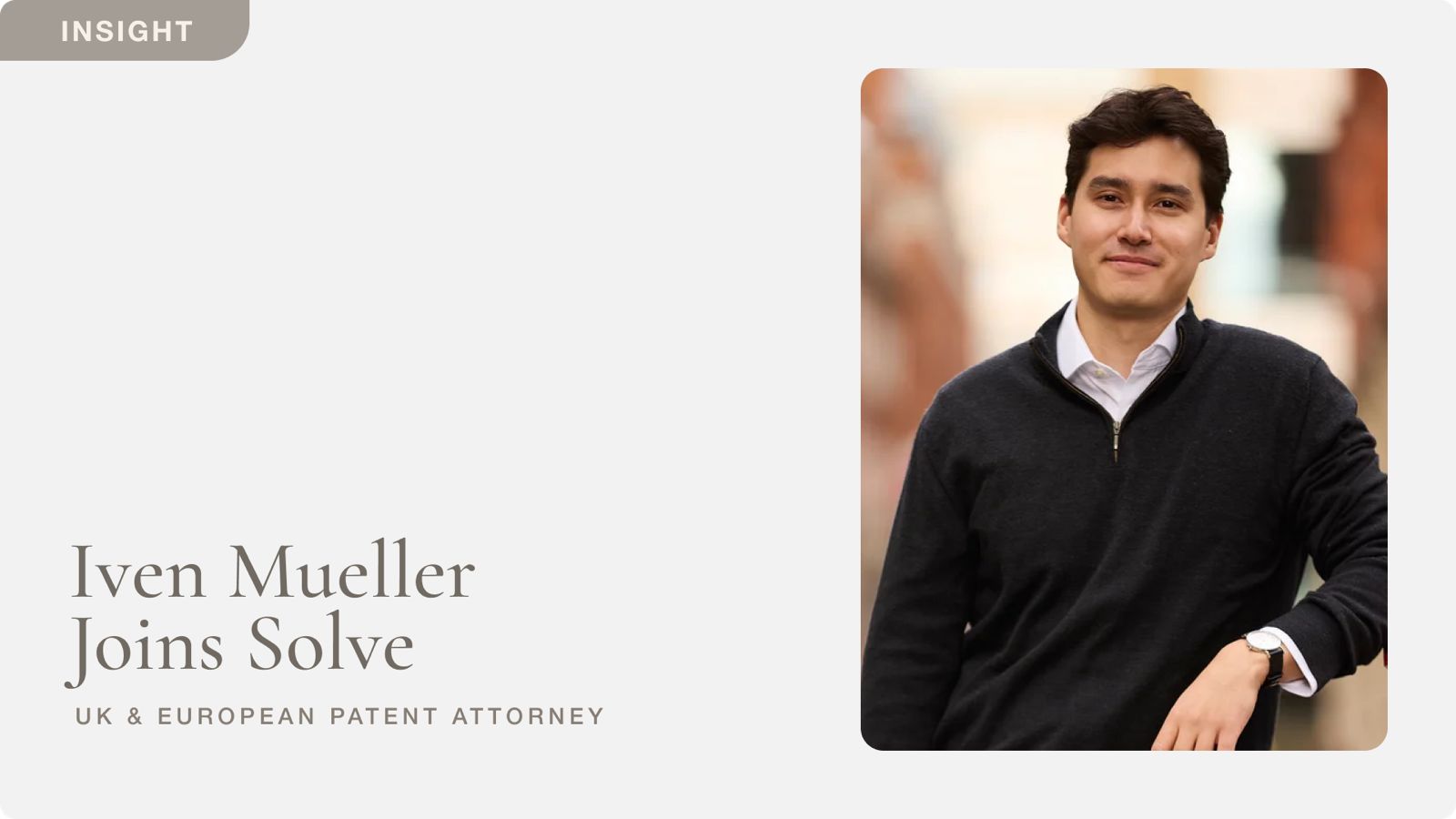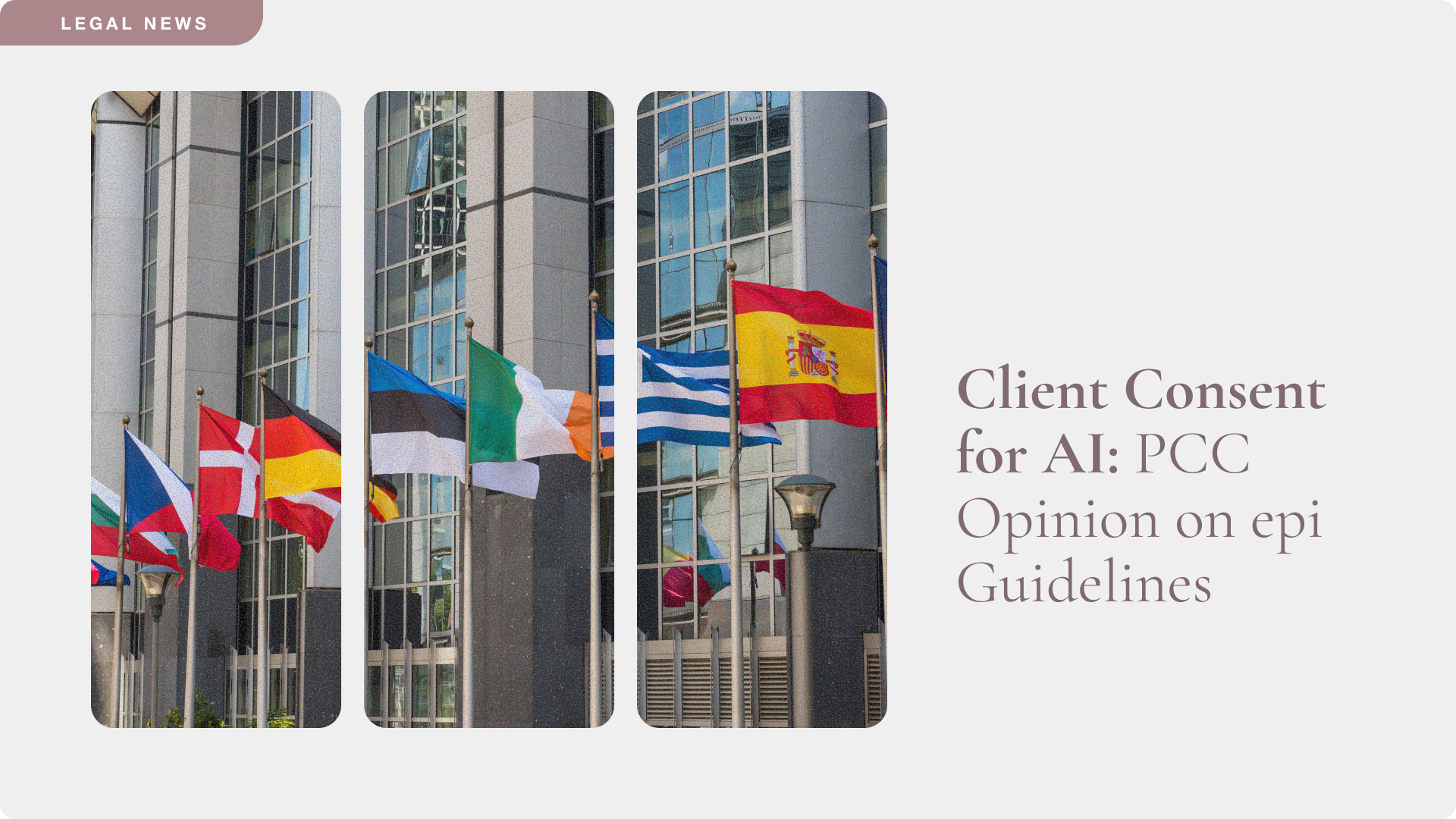The ROI of AI Patent Drafting: Building the Business Case
AI adoption in patent law firms rarely stalls because partners doubt the technology. The real barrier is commercial justification.
When evaluating any significant investment, partners ask the same fundamental questions:
- Does this software actually save us money?
- Will it create capacity we can monetize?
- Can it generate new revenue streams?
Solve Intelligence’s Patent Copilot™ was built with these questions top of mind. This article provides a high-level overview of the business case and ROI breakdown of AI patent drafting and partnering with Solve Intelligence.
.avif)
Why ROI is the Central Question for Fixed Fee Work
Patent drafting operates on increasingly tight margins, a pressure intensified by client preferences for predictable costs.
According to Clio's Legal Trends Report, 71% of legal clients prefer flat-fee arrangements over hourly billing. This trend is especially prominent in patent law where innovators need visibility of potential IP expenses. When every patent application is labour-intensive, requiring an average of 28 hours at approximately $500 per hour in billable value, efficiency gains translate directly into profitability improvements. The fixed-fee model creates what the industry calls the "write-off problem,” as patent attorneys frequently spend more time on matters than initially budgeted.
Efficiency gains, increased attorney capacity, and reduced write-offs directly affect profitability, client satisfaction, and an IP team’s competitive edge. Firms need a way to quantify these benefits to justify and take confidence in their investment decisions.
What are the Key Drivers of ROI for AI Patent Drafting?
The return on investment from AI patent drafting stems from six interconnected value drivers that deliver both immediate financial impact and long-term competitive advantage.
- Efficiency gains form the foundation of ROI calculations. Solve Intelligence’s Patent Copilot™ delivers a conservative 30% efficiency gain per draft, with users achieving 40% to 60% as they gain proficiency. A standard 28-hour application reduces to 19.6 hours, freeing 8.4 hours per matter through faster specification drafting, a more streamlined process with stakeholders, alignment between figures, claims, and the detailed description, and automated office action analysis, for example.
- Capacity increase converts efficiency into revenue. Attorneys handling 10-15 applications annually can increase output to 13-20 applications without billing additional hours when achieving 30% efficiency gains using AI. Additional applications drafted per attorney can generate six-figure returns per attorney that scale to seven figures across teams.
- Write-off reduction captures lost revenue from fixed-fee budget overruns. When a firm quotes $10,000 for an application assuming 20 hours of work, but the draft actually requires 28 hours to complete, the extra 8 hours represent lost revenue that cannot be billed. This yields a 70% realization rate (% hours billed for vs. actual hours worked), with substantial amounts effectively written off. The 30%+ efficiency gains across multiple applications eliminate most of this leakage, allowing firms to recover millions of dollars using AI across the patenting process.
- Revenue protection addresses competitive urgency. AI-enabled firms can offer fixed fee rates 20% lower than traditional competitors while maintaining margins, winning price-sensitive clients and larger portfolio work. Non-adopters face market share erosion as client expectations shift toward AI-enabled service delivery.
- Quality improvements emerge from automated and customisable templates and enhanced consistency. Solve Intelligence’s platform ensures that the AI adheres to client-specific styles and attorney preferences, flags claim-description-figure discrepancies before prosecution issues arise, and frees attorneys to reinvest time in higher-value claim strategy and technical positioning.
- Client satisfaction compounds across multiple dimensions: turnaround times compress from four weeks to two, pricing flexibility increases while margins hold, and consistent quality builds confidence. For forward-thinking clients, AI adoption also signals operational sophistication that influences firm selection.
How to Build the Business Case for AI Patent Software Adoption
Partners need a framework they can customize to their firm's specific economics and present in management meetings.
Establish your baseline. Document average hours per application, attorney cost, and typical fixed fees at your firm. These vary significantly between boutique firms and large practices. Calculate your current profit margin per matter, which determines how dramatically efficiency improvements can impact results.
Model multiple scenarios. Show immediate returns (margin improvement at current volume) and growth scenarios (capacity expansion with additional matters). Include what 30%, 40%, and 50% efficiency gains would yield. Add sensitivity analysis: if only 60% of attorneys achieve these gains, what's the return? Start by modeling conservative, moderate, and optimistic cases.
Quantify firm-specific pain points. Does your team spend excessive time on figure drafting, sharing overflow work with other practitioners, or training junior associates? Calculate the dollar value of bottlenecks and demonstrate how Solve Intelligence’s AI tools address them.
Create a phased adoption plan. Propose a pilot with 5 to 10 attorneys and define success metrics (e.g., hours per application, realization rates, client feedback). As an increasing number of practitioners adopt AI into their workflows, the ROI compounds. This phased approach reduces perceived risk while demonstrating confidence in the investment.
Beyond Hard Numbers: What Are The Strategic Benefits of AI Patent Software?
The quantifiable returns of AI patent drafting software justify adoption, but there are three core strategic benefits that create compounding value over time.
Scalability that accelerates growth. AI has the ability to transform business development strategy: partners can win larger portfolios and larger clients, prove their firm's capacity with quick turnarounds, and build the revenue foundation that justifies expanding their IP teams ahead of competitors. Onboarding and training of attorneys to meet the standards of best practice for specific clients can also be accelerated.
Positioning in competitive pitches. RFPs increasingly include technology capability questions. Firms can point to concrete adoption rather than "exploring options," and credibly commit to turnaround times and pricing competitors cannot match.
Retaining and recruiting high-quality talent. Mid-level associates cite workflow quality in career decisions with increasing frequency. Solve Intelligence's Patent Copilot™ removes the repetitive work involved in application drafting and prosecution processes, allowing focus on claim strategy and client relationships and therefore enhanced patenting workflows. This matters for retaining mid-level associates and creates differentiation in recruiting talent.
What Are Common AI Patent Software Objections?
Patent attorney's evaluating AI patent drafting software adoption raise predictable concerns that require direct answers.
- "Will this reduce billable hours?" For fixed-fee work, a commonly adopted agreement in private practice firms, efficiency doesn’t constrain (the same fixed fee rate can yield ~3x profit margin using Solve Intelligence). Freed time can be reallocated to higher-value work such as strategic claims drafting, patent portfolio management, and cross-selling opportunities.
- "What if adoption is slow?" Even partial adoption delivers returns. If 60% of attorneys/agents achieve gains, ROI remains substantial. Firms may start with a 5-10 attorney/agent pilot, demonstrate results, then scale. ROI compounds with firm-wide rollout as customization of Solve Intelligence’s AI and increased proficiency pushes efficiency from a conservative 30% toward 40-60%.
- "Is this just a cost, not an investment?" Calculate cumulative value across the phases of adoption. Phase 1: immediate ~3× margin increase per matter. Phase 2: capacity expansion as attorneys handle additional applications from existing clients. Phase 3: competitive positioning advantages in RFPs. Compare also against the competitive risk of AI-enabled firms undercutting pricing by 20% while maintaining margins.
Conclusion
ROI calculations provide the adoption framework, but they reveal something more fundamental: AI in patent drafting has moved on from the experimental stage to being a competitive requirement.
Patent teams that adopt AI strategically compound advantages over time. They improve profitability while building capacity, reduce write-offs, create pricing flexibility, and accelerate these benefits as proficiency deepens across the team. Laggards face mounting pressure from AI-enabled competitors. Non-adopters must either match pricing and sacrifice profitability, or maintain rates and watch clients migrate.
The overview of ROI reflects competitive positioning, client trust, and resilience against market evolution. IP-rich companies selecting outside counsel increasingly expect AI integration.
The 300+ leading IP teams adopting Solve Intelligence demonstrates the business case for AI and how partners become decisive when they model firm-specific economics. The question is no longer whether AI delivers ROI, but whether firms can afford the competitive erosion of delayed adoption. Solve Intelligence built AI for patents to help answer the commercial questions that drive partnership decisions.
For ROI calculations, contact our Partnerships team at partnerhips@solveintelligence.com.
AI for patents.
Be 50%+ more productive. Join thousands of legal professionals around the World using Solve’s Patent Copilot™ for drafting, prosecution, invention harvesting, and more.



.png)
